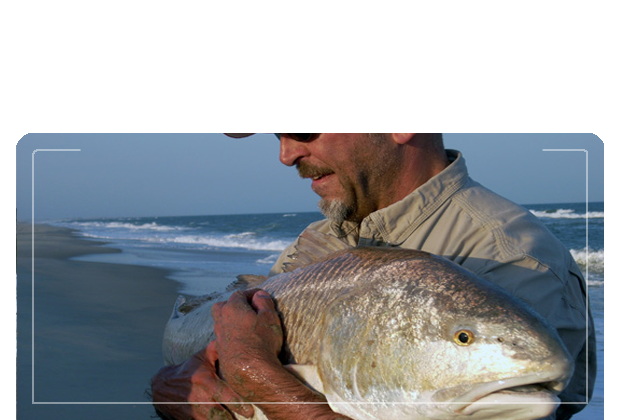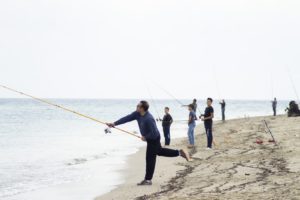Carolina Beach Surf Fishing Tips
Surf Fishing Tips for Carolina Beach, NC
Fishing is a beloved pastime for many, and surf fishing, in particular, combines the thrill of angling with the beauty and serenity of the ocean shore. For those on the Atlantic coast, Carolina Beach is a prime location for this aquatic adventure. This article will provide you with detailed guidance and tips to maximize your surf fishing experience at Carolina Beach.
We’ll delve into local fish species and their seasons, explore the best baits and lures, discuss fishing gear, tackle, and safety considerations, and much more. We aim to equip both novice and experienced anglers with the knowledge and tools necessary to have a fruitful, enjoyable, and safe Carolina Beach surf fishing adventure. Furthermore, we’ll discuss local regulations to ensure that your surf fishing expedition remains in compliance with the rules and contributes positively to the local ecosystem’s sustainability.
This guide is backed by extensive research, expert opinion, and local knowledge to give you an authentic and accurate account of surf fishing in Carolina Beach. Get ready to take your surf fishing skills to a new level!
Table of Contents
- Understanding the Species
- Best Baits and Lures
- Fishing Gear and Tackle
- Safety and Etiquette
- Local Regulations
- 20 Tips and Tricks to help you be a better Surf Fisherman
- Frequently Asked Questions
- Last Takeaway
Understanding the Species
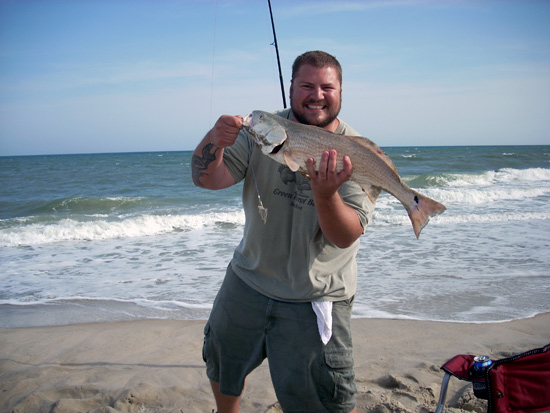
Carolina Beach, located in the coastal region of North Carolina, boasts a diverse and plentiful fish population that varies by season. Each fish species has unique behaviors and preferences, which can significantly impact your fishing strategy. Let’s examine some of the prevalent species you can expect to encounter:
- Red Drum (Redfish): Red Drum, also known as Redfish, is a popular catch year-round at Carolina Beach but is particularly active during the spring and fall. These fish often frequent the surf zone and can grow to a substantial size. Anglers may have the best luck with cut bait, shrimp, or crabs.
- Flounder: This bottom-dwelling fish is abundant in the summer months. Flounder are ambush predators and respond well to live bait, with mud minnows and finger mullet being particular favorites.
- Black Drum: Like their red cousins, Black Drum are found year-round but are most plentiful during the cooler months. They are bottom feeders that favor crustaceans, making shrimp and crab effective bait choices.
- Bluefish: Bluefish are most commonly caught in the spring and fall. They are fast, aggressive feeders and can be lured using a variety of bait fish and artificial lures.
- Spanish Mackerel: Spanish Mackerel are a summer visitor to the surf of Carolina Beach. They are fast swimmers and respond well to fast-moving, shiny lures.
- Pompano: These fish are a highly prized catch due to their taste. They are found close to the shore in the summer months. Pompano have a preference for small crustaceans, so sand fleas (also known as mole crabs) are an excellent choice for bait.
Remember, the key to successful surf fishing is understanding the behavior and preferences of your target species. Researching and recognizing the prime times, best bait, and perfect fishing spots for each species will give you a substantial advantage when surf fishing at Carolina Beach.
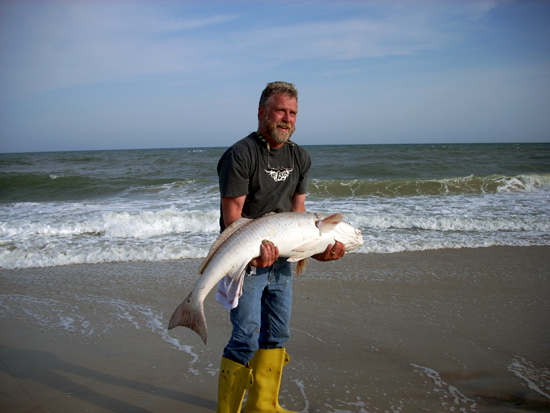
Best Baits and Lures
The success of your surf fishing experience often boils down to your choice of bait or lure. Using the right bait can significantly increase your chances of attracting the desired species of fish. Here’s a rundown of some of the best baits and lures for surf fishing in Carolina Beach:
- Cut Bait: Cut bait, such as mullet or menhaden, is a versatile choice and can attract a wide variety of species, including Red Drum and Bluefish. The scent trail left by cut bait in the water can draw fish from a considerable distance.
- Live Bait: Live bait is often the go-to choice for targeting species like Flounder and Black Drum. Mud minnows, finger mullet, shrimp, and crabs can all be effective, depending on the species you’re targeting. Remember, Flounder and Black Drum are ambush predators and bottom feeders, respectively, so they respond well to the movement and scent of live bait.
- Sand Fleas: Sand fleas, or mole crabs, are a fantastic bait choice for surf fishing, particularly for Pompano. They are naturally present in the surf zone and are a favored food of many species.
- Artificial Lures: Lures can be a great option when the fish are actively feeding. The shine and movement of lures can mimic small bait fish, attracting species like Bluefish and Spanish Mackerel. Some popular lure choices include spoons, jigs, and plugs.
- Fish Bites: An artificial, scented bait that’s a favorite among many surf anglers, Fish Bites are available in various flavors to mimic different baits like shrimp, clam, and crab. They have been proven effective for a variety of species, including Whiting and Red Drum.
When choosing your bait or lure, consider the feeding habits and preferences of the fish species you’re aiming to catch. You may need to experiment and adjust your choices based on what’s working best at any given time. Pay attention to what other successful anglers on the beach are using – local knowledge can be invaluable!
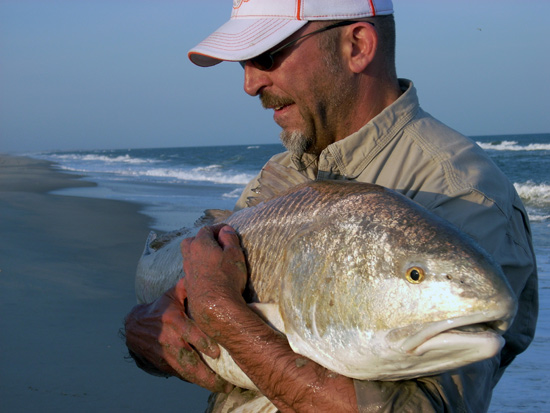
Fishing Gear and Tackle
When it comes to surf fishing at Carolina Beach, the right gear and tackle are essential for a productive experience. The expansive nature of the surf environment necessitates specific types of equipment. Here’s a rundown on what you’ll need:
- Rods: Surf fishing rods are typically longer than those used for other types of fishing, often ranging from 9 to 15 feet. These longer rods allow for casting out further into the surf and handling the larger species you’re likely to encounter. They also keep your line high above the breaking waves.
- Reels: A good quality spinning or conventional reel that matches your rod’s size and power is crucial. Look for reels that are designed for saltwater use to ensure they can resist the corrosive effects of the sea.
- Line: A braided line is a popular choice for surf fishing due to its strength, durability, and sensitivity. It allows for longer casts and can withstand the rough conditions found in the surf. A common choice would be a 20-30 pound test line, but adjust according to the species you’re targeting.
- Leaders: A leader is a section of line attached to the end of your main fishing line. It’s usually made of a different material like fluorocarbon or monofilament, which are more abrasion-resistant and less visible to fish. A 20-50 pound test leader is a good range for surf fishing in Carolina Beach.
- Hooks and Sinkers: Circle hooks are a popular choice due to their effective hook-set and less harm caused to the fish, making catch and release safer. The size of the hook will depend on the species targeted. Pyramid sinkers are often used in surf fishing as they help keep your bait in one place amidst the waves.
- Fishing Rigs: Various rigs can be used for surf fishing. The fish-finder rig is a versatile and popular choice that works well with a variety of baits and targets bottom-dwelling species. The double dropper loop rig, also known as a pompano rig, is excellent for targeting species like Whiting and Pompano that feed in the surf zone.
- Accessories: Don’t forget essential accessories such as a quality tackle box, fishing pliers, a bait knife, and a cooler to store your catch. A rod holder will keep your rod secure and free your hands.
Remember, quality gear and the right setup can significantly enhance your surf fishing experience. While it’s possible to surf fish with basic equipment, investing in gear specifically designed for the surf will give you a notable advantage.
Safety and Etiquette
A memorable and rewarding surf fishing experience is not only about the number or size of the fish you catch, but also about safety, respect, and adherence to certain unwritten rules of etiquette. Here are a few crucial points to bear in mind while surf fishing at Carolina Beach:
- Tide Awareness: Understanding and being mindful of the tidal movements is paramount for safety. Rapidly changing tides can lead to dangerous situations, so it’s vital to check the tide table and keep an eye on the water’s movements.
- Weather: Always keep an eye on the weather forecast. Coastal weather can change rapidly, and storms can roll in with little warning. If you see lightning or hear thunder, leave the beach immediately.
- Swimmer Safety: Pay attention to swimmers and other beachgoers. Cast your line away from crowds to avoid accidental hookings. Remember, during peak season, the beach can get crowded, so adjust your fishing times to less busy periods, like early morning or late evening.
- Keep Distance: Be respectful of other anglers. Maintain a good distance from others when casting to avoid tangling lines or disturbing their fishing spot.
- Catch and Release: If you intend to practice catch-and-release fishing, ensure you handle the fish correctly to minimize stress and injury. Wet your hands before touching the fish, avoid touching the gills, and try to remove the hook as quickly and gently as possible.
- Leave No Trace: One of the most important aspects of fishing etiquette is to clean up after yourself. Dispose of all waste properly, including old lines, hooks, and bait. Leaving trash behind is not only disrespectful to other beachgoers but also harmful to wildlife.
By adhering to these safety and etiquette guidelines, you can help ensure that Carolina Beach remains a safe, clean, and enjoyable destination for all visitors, as well as a thriving habitat for its many species of fish.
Local Regulations
Abiding by local regulations is a fundamental part of responsible fishing. These laws are designed to protect fish populations and their habitats, ensuring sustainable fishing practices. Here are some key regulations and considerations when surf fishing at Carolina Beach:
- Fishing License: Before you start fishing, ensure you have a valid North Carolina fishing license. Both residents and non-residents can purchase licenses, which are available online, over the phone, or at authorized agents like tackle shops.
- Bag and Size Limits: The North Carolina Division of Marine Fisheries establishes bag limits (the number of fish you can keep in a day) and size limits for various species. These regulations can change from year to year, so always check the latest information before you start fishing.
- Protected Species: Some species, such as certain types of sharks, are protected and must be released if caught. Again, refer to the Division of Marine Fisheries for the most up-to-date information.
- Respect Closed Seasons: Some fish species have closed seasons to protect them during crucial periods of their life cycle, such as spawning. It’s illegal to keep fish caught during these periods.
- Use of Equipment: Certain types of gear are restricted or banned to prevent overfishing or harm to marine life. For instance, gill nets and certain types of traps may not be used without a special permit.
For the most accurate and current information, always refer to the North Carolina Division of Marine Fisheries’ regulations, available on their website. Remember, these rules are there to protect the environment and ensure that everyone can continue to enjoy surf fishing at Carolina Beach for generations to come.
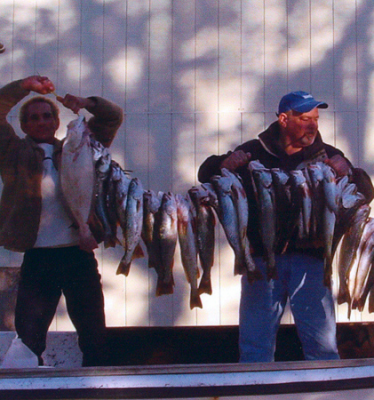
20 Tips and Tricks to help you be a better Surf Fisherman
- Understand the Species: Learn about the habits, preferences, and seasons of the fish species in your area. Knowledge is power in fishing.
- Use the Right Gear: Invest in quality, purpose-built surf fishing gear. A sturdy, long rod and a reliable, saltwater-resistant reel can make a significant difference.
- Check the Weather and Tides: The conditions can greatly impact fishing success. High tides and overcast weather often lead to better fishing.
- Practice Casting: Work on your casting technique and aim for distance and accuracy. The further you can cast, the more water you can cover.
- Change Bait and Lures: If one type of bait or lure isn’t working, don’t be afraid to switch it up. Sometimes a simple change can make a huge difference.
- Use Fresh Bait: Whenever possible, use fresh bait. The scent and movement of fresh bait can be much more enticing to fish.
- Mind the Hook Size: Make sure the hook size matches the bait size and the species you’re targeting. Too big or too small can both lead to missed bites.
- Maintain Your Gear: Saltwater can be harsh on gear. Rinse your equipment with fresh water after each use to prevent corrosion.
- Use a Shock Leader: A shock leader can prevent break-offs during casting and when battling larger fish.
- Learn to Read the Beach: Look for signs of fish, such as diving birds, jumping bait, or darker patches of water (indicating deeper holes or channels).
- Fish at Different Times: Experiment with fishing at different times of day. Some species are more active during dawn, dusk, or at night.
- Use a Fishing Rig: Rigs like the fish-finder or double dropper loop can increase your chances of success by presenting the bait more attractively or targeting multiple species at once.
- Patience is Key: Don’t get discouraged if you’re not catching anything. Patience is often rewarded in fishing.
- Safety First: Always prioritize your safety. Monitor weather conditions, be aware of your surroundings, and don’t take unnecessary risks.
- Practice Catch and Release: If you’re not going to eat what you catch, release it. This practice helps to ensure a healthy and sustainable fish population.
- Ask Local Anglers: Don’t be shy to ask local anglers for advice. They often have invaluable insights into what works best in their area.
- Respect Local Regulations: Always follow local fishing regulations. These are in place to protect local fish populations and their habitats.
- Keep Hydrated and Protected: Drink plenty of fluids and use sun protection. A day on the beach can quickly lead to dehydration and sunburn if you’re not careful.
- Be Respectful of Others: Respect other anglers and beach-goers. Keep a reasonable distance, don’t cast towards people, and clean up after yourself.
- Enjoy the Process: Remember, fishing is as much about the experience as it is about the catch. Take time to enjoy the beauty of nature around you.
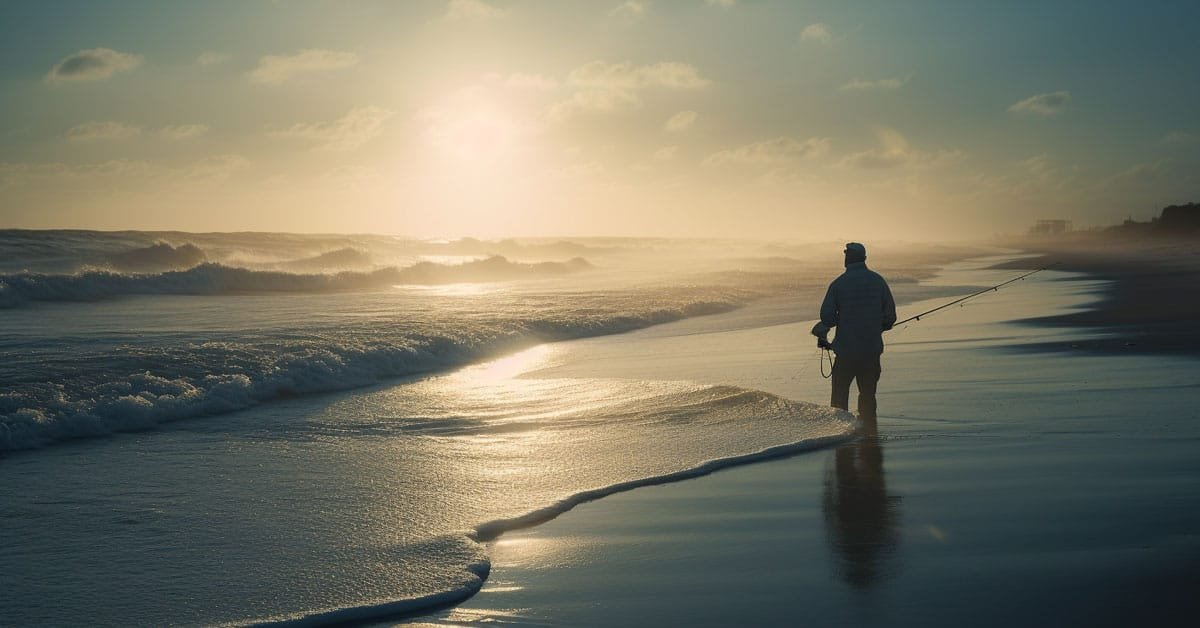
Frequently Asked Questions
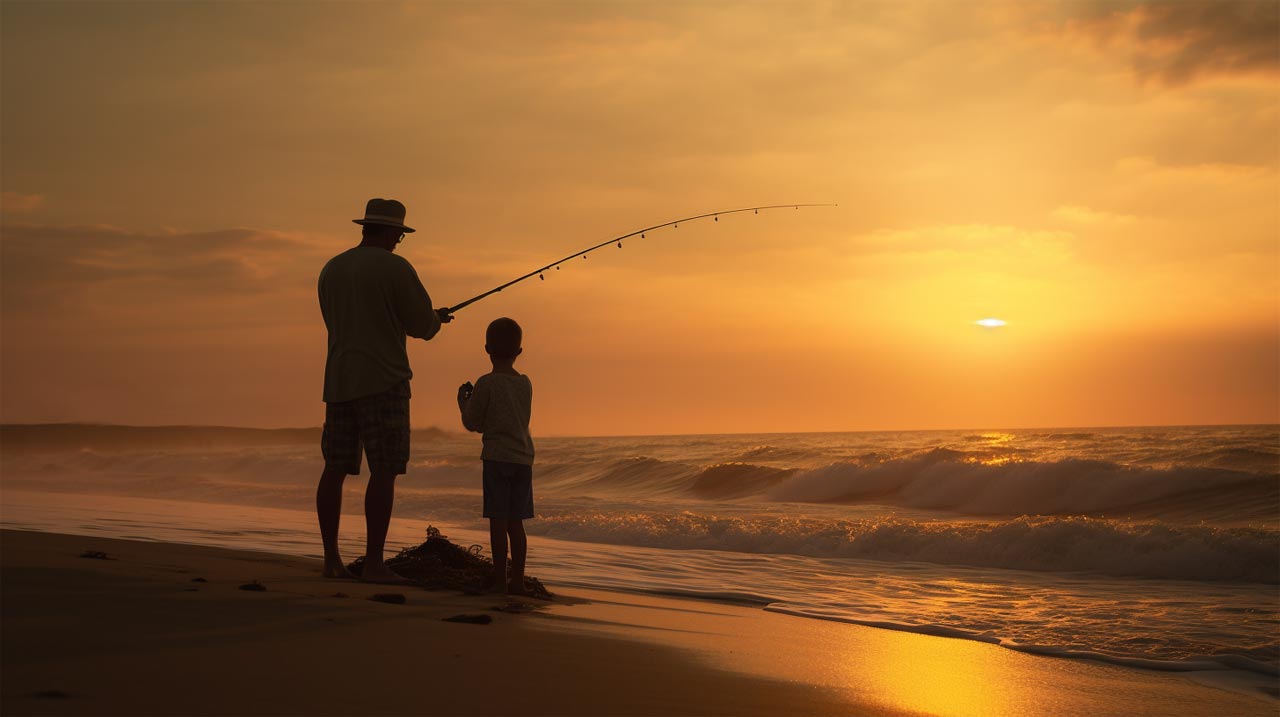
Last Takeaway
After going through the intricacies of surf fishing at Carolina Beach, the most crucial takeaway is that successful surf fishing requires a combination of local knowledge, appropriate gear, and respect for the environment. Understanding the local species and their patterns, choosing the right bait and lures, using the right equipment, and following safety and etiquette guidelines all contribute to a rewarding and sustainable fishing experience.
I research and report on fishing, fishing gear/equipment, survival topics, and marketing for outdoors related businesses. I assist here on CB Fishing as the editor. Articles may contain AI researched content. All content is published for education and entertainment purposes only, NOT LIFE, HEALTH, SURVIVAL, FINANCIAL, BUSINESS, LEGAL OR ANY OTHER ADVICE. Learn more about Mark Mayo
- Guide to starting a Fishing Charter business
- Carolina Beach Local Fishing Reports #94RT
- Strategic Fishing Charter Marketing
- Carolina Beach Local Fishing Reports #83RT
- Carolina Beach Local Fishing Reports #73RT
- East Coast Got Em On King Mackerel Tournament 2023
- 2023 Recreational Flounder Season Announced
- Carolina Beach Local Fishing Reports #63RT
- Beginner’s Guide: Your First Fishing Trip in Carolina Beach
- Carolina Beach Fishing Reports #53RT
- King Mackerel Fishing in Carolina Beach, NC: A Comprehensive Guide
- Current Fishing Report and Trends and new “Big Red” Artwork
- Surf Fishing in Carolina Beach, North Carolina
- What Do Redfish Eat? A Comprehensive Guide
- Early Spring 2023 Carolina Beach Fishing Report
- My Top 10 fish to catch at Carolina Beach, NC!
- What are the Most Popular Fishing Spots in Wilmington, NC?
- How to surf fish for bull reds
- Flounder in the Cape Fear River
- Striped bass in the Cape Fear River
- What’s so special about The Cape Fear River?
- Top 4 fish to target in Carolina Beach, NC
- East Coast Got Em On King Mackerel Tournament starts to wind down
- 2022 ranking results – East Coast Got Em On King Mackerel Tournament

